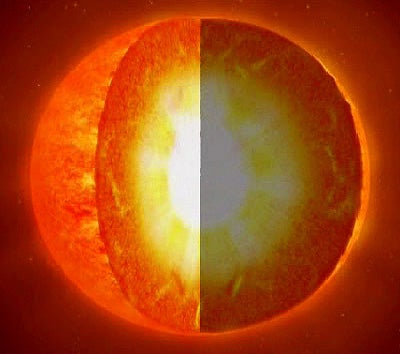Listening to the Sun through a technique similar to seismology opened a new era for understanding the Sun’s interior. The French Space Agency’s (CNES) and the European Space Agency’s (ESA) COnvection ROtation and planetary Transits (COROT) satellite applied this technique to three stars, directly probing the interiors of stars other than the Sun for the first time.
When scientists discovers the Sun’s global oscillations, they opened a window to the Sun’s interior. Just as the propagation of seismic waves on Earth provides information about our planet’s interior, sound waves travel throughout the Sun carrying information about what is happening below the surface.
These oscillations also can be observed on other stars. They can be detected through the variation in the light emitted by the star as the surface wobbles — COROT’s technique. This method reveals the star’s internal structure, and how energy moves from the core to the surface.
“Other techniques to estimate stellar oscillations have been used from the ground, but they are limited in what they can do,” said Malcolm Fridlund, Project Scientist for COROT at ESA’s European Space Research and Technology Centre (ESTEC), in the Netherlands, and co-author of the results.
“Adverse weather conditions, plus the fact that you cannot observe stars during daytime, oblige ground astronomers to interrupt their observations,” he said. “Now, the key to detecting such small stellar oscillations from big distances is not only the sensitivity of an instrument, but also the opportunity of observing the star without interruption: any interruption produces noise in the data that can cover a signal completely. Therefore, to be certain, we must approach the question with the right instruments and from space.”
The three stars COROT probed — known as HD499933, HD181420, and HD181906 — are similar to the Sun. They are outside stellar neighborhood, so their brightness doesn’t blind COROT’s instruments.
“The fact that COROT succeeded in probing the interior of Sun-like stars with direct measurements for the first time is a huge leap in understanding stars in general,” said Fridlund. “In addition, this will help us to understand, by comparison, our own Sun even better.”










